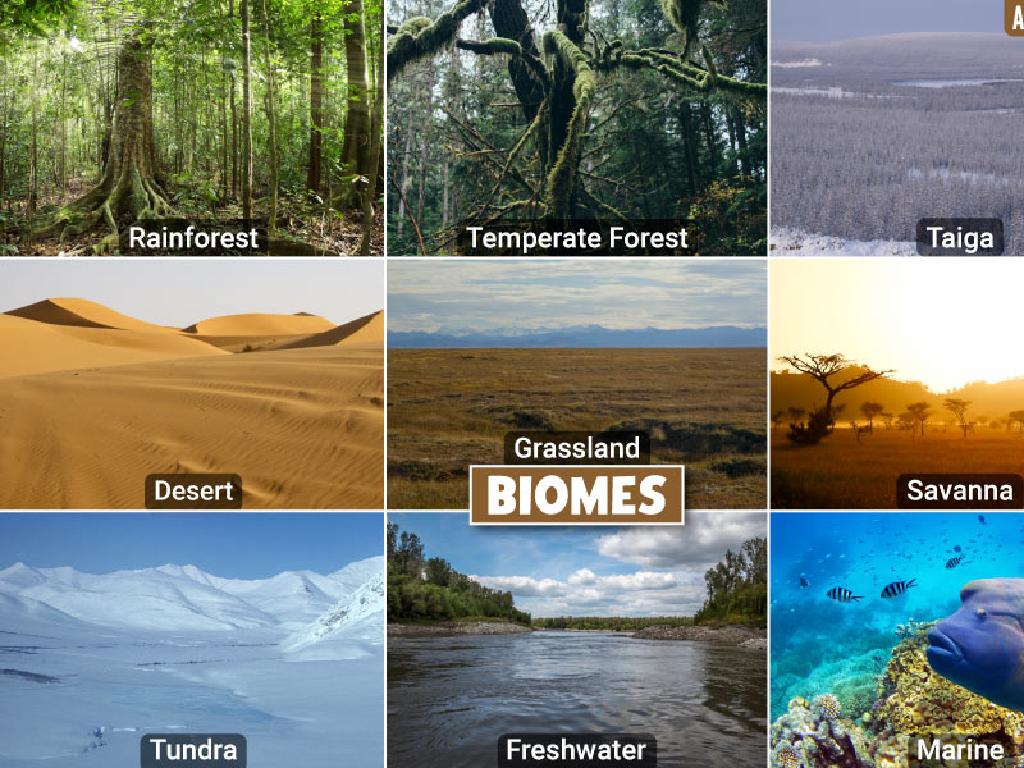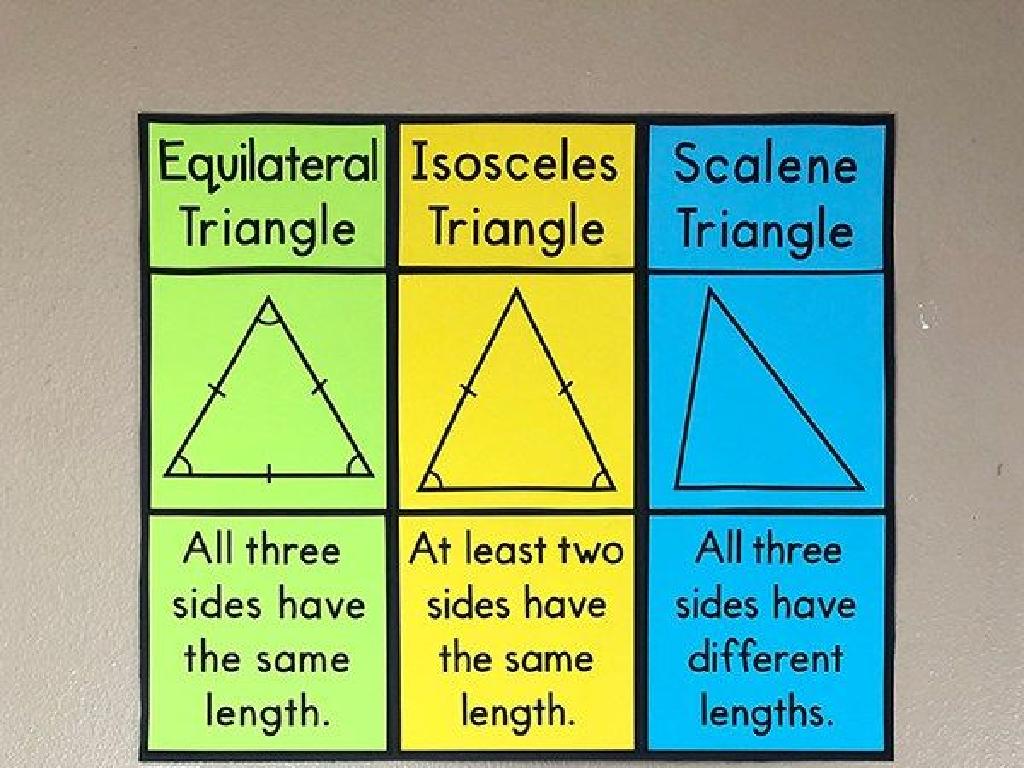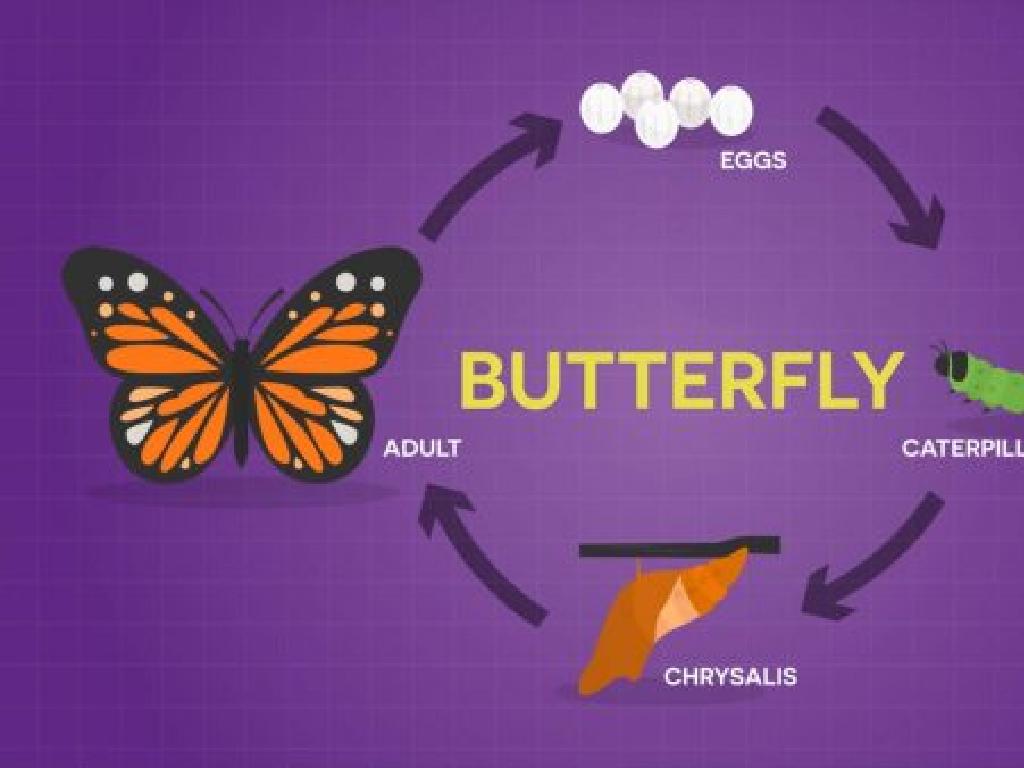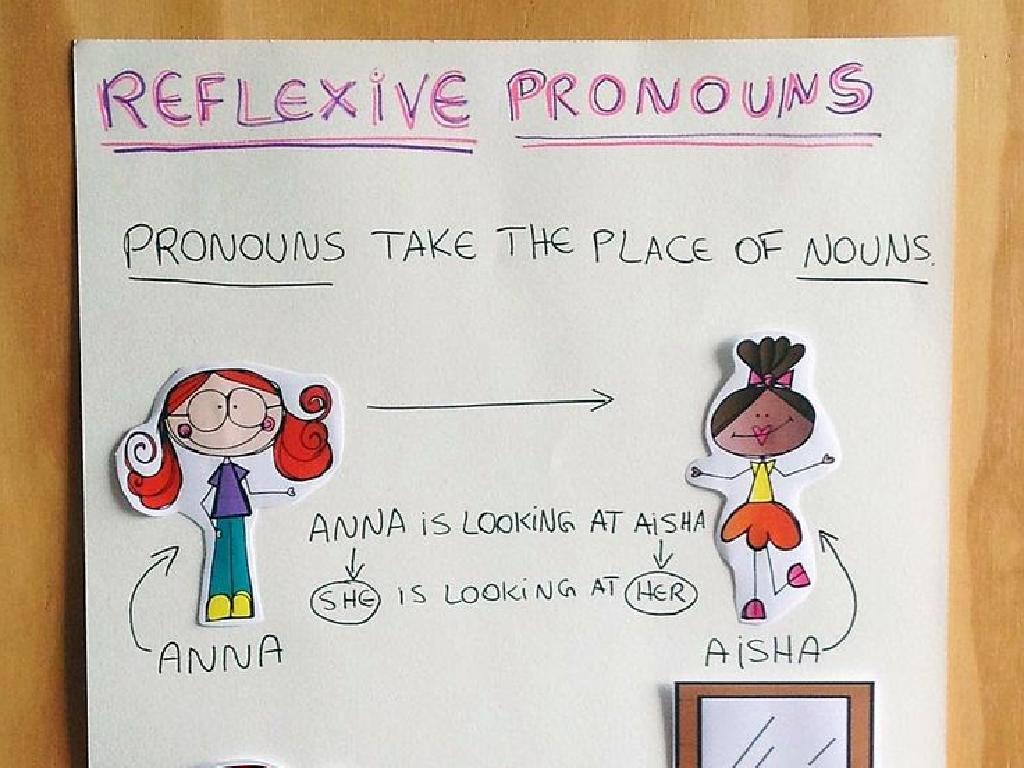Where Do Water Lilies And Saguaros Live?
Subject: Science
Grade: First grade
Topic: Traits
Please LOG IN to download the presentation. Access is available to registered users only.
View More Content
Welcome to the World of Plants!
– What is a plant?
– Plants are living things
– Like animals, plants are alive and need care
– Plants grow in the earth
– Roots in soil help them stand and get food
– They need water and sunlight
– Sunlight and water help plants grow and stay healthy
|
This slide introduces first graders to the concept of plants as living organisms and their basic needs. Begin by asking the class what they know about plants to engage them. Explain that plants are a type of living thing, just like animals and humans, and they have specific needs such as water and sunlight. Emphasize that without these, plants cannot grow. Use simple language to ensure understanding and consider bringing in a plant to show its parts and discuss how it lives in the soil and uses roots to absorb water and nutrients.
Exploring Water Lilies
– Water lilies are water plants
– They grow in water, not on land
– They have floating round leaves
– Leaves are like little boats on the water
– Found in ponds and lakes
– Look for them in still, shallow waters
|
This slide introduces first graders to water lilies, emphasizing their aquatic nature and distinctive floating leaves. Explain that water lilies are not like the plants we see on land; they are specially adapted to live in water. Their big, round leaves, which can be spotted floating on the surface, help them to get sunlight and stay afloat. They are commonly found in calm freshwater environments like ponds and lakes. Encourage students to think about any local bodies of water where they might have seen water lilies or to imagine what it would be like to see a pond covered in these beautiful plants.
Exploring Saguaro Habitats
– Saguaros are giant desert cacti
– Saguaros are like tall, spiky towers in the desert.
– They can grow tall and live long
– Some saguaros are over 40 feet tall and live up to 200 years!
– Thick skin helps them store water
– Their skin is like a sponge, soaking up rainwater to use later.
– Saguaros thrive in sunny places
– Just like we enjoy sunny days, saguaros need lots of sunlight!
|
This slide introduces first graders to the saguaro cactus, emphasizing its distinctive traits and the environment it lives in. Saguaros are iconic cacti found in desert regions, particularly the Sonoran Desert. They are known for their impressive height and longevity. Their thick skin and ability to store water allow them to survive in arid conditions where water is scarce. They also require plenty of sunlight, much like other desert-adapted plants. When discussing this slide, encourage students to think about how these traits help the saguaro survive in its habitat and compare it to how they adapt to their own environments.
Plant Homes: Water Lilies and Saguaros
– Water lilies live in ponds
– They need lots of water to grow
– Saguaros live in dry deserts
– They can survive with very little water
– Plants grow where they can thrive
– Every plant has a special home
|
This slide introduces the concept that different plants live in environments that best suit their needs. Water lilies thrive in watery environments like ponds because they require a lot of water. In contrast, saguaros are adapted to the arid conditions of the desert and need very little water to survive. Emphasize that every plant has a unique ‘home’ or habitat where it has the right conditions to grow. This can be a good opportunity to discuss with students how different living things have different needs and how they adapt to their habitats. You can also introduce the concept of adaptation and how it helps plants and animals survive in their respective environments.
Let’s Compare: Water Lilies and Saguaros
– Water lilies and saguaros: different looks
– Water lilies float on water, saguaros stand tall in the desert
– Both need sunlight to grow
– Sunlight helps them make food to grow
– Both provide animal homes
– Frogs use lilies, birds nest in saguaros
– Different places they live
– Lilies live in ponds, saguaros in the desert
|
This slide aims to teach students about the different habitats and characteristics of water lilies and saguaros. While they look different and live in different environments, they share common needs like sunlight and serve as important habitats for animals. Water lilies thrive in wet, aquatic environments, whereas saguaros are adapted to the dry desert. Discuss how both plants have adapted to their unique habitats and the importance of sunlight for their growth through photosynthesis. Highlight the symbiotic relationships they have with animals, providing shelter and sometimes food. Encourage students to think about other plants and animals that live in these environments and how they might be similar or different.
Class Activity: Plant Homes
– Create mini plant homes
– Plant seeds in cups with soil
– Water them regularly
– Observe growth in sun and shade
– Some plants love sunlight, others thrive in shade
|
This activity is designed to help students understand different environments plants need to grow. Provide each student with a cup, soil, and seeds. Guide them through the process of planting the seeds and explain the importance of water and light for plant growth. Set up two areas in the classroom: one in the sunlight and one in the shade. Have students make predictions about which environment their plant will grow better in and why. Over the coming weeks, students will observe and record the growth of their plants, learning about the traits of different environments and how they affect plant life. Possible variations of the activity could include using different types of seeds, varying the amount of water, or measuring growth rates.






